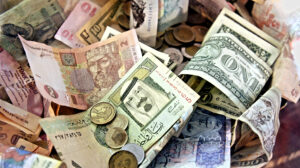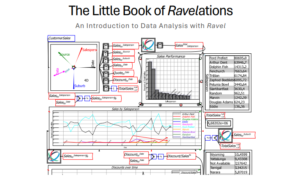The generally accepted definition of money I was taught in High School Economics class is “Money is a medium of exchange and a standard of value”.
What does this mean?
Table of Contents
Store of value
You can save it now and use it later to buy stuff.
Medium of exchange
It’s what everyone uses to buy and sell stuff.
Unit of account
Provides a common base for pricing stuff.
But something is missing
While the above is true, it’s not the complete story.
What is money?
Ultimately, what makes money money s tax credits.
It is what the residents of a nation need to pay their taxes, as dictated by the government who issues the currency, demands it be used to pay taxes, and punishes people who don’t pay taxes.
The best way to illustrate what this means is to tell a story. It is the story of the origin of money, from ages ago, in various cultures around the world.
The story of the origin of money
As with many good stories, it starts with…..
Once upon a time, people lived in small villages where the principal occupation was farming. The raising of plants and animals for food, clothing, and pretty much everything else.
Life was simple. A bit harsh perhaps, but simple.
It often came to pass that someone had a need or a use for something someone else had.
As everyone knew everyone else, and nobody traveled anywhere, the principal way of handling transactions, what we might call commerce, was an informal, but often fairly complex system, of obligations, of credits.
Debt if you will.
Someone needs 3 chickens. Someone else has 3 chickens. The chickens were given with an understanding that person A now owes person B something with the value of 3 chickens.
Maybe this was a quarter of a freshly killed deer, maybe this was a table for their kitchen, maybe this was a stack of firewood for the winter.
These informal credit transactions were easy to keep track of, as the village was small. Many cultures didn’t even bother to write this stuff down, which was good, as most people couldn’t yet read or write.
Every so often, maybe once or twice a year, the entire village would gather for a debt circle.
Someone would say “I owe him 3 chickens”. The guy who is owed the chickens would way, “Yes, and I owe that guy two chairs”. The guy who is owed the two chairs would say “Yes, and I owe that guy a cooking pot”.
They would go around the circle until they got back to the person with whom that debt circle started, at which point those debts would be canceled.
They would do this again, until they had another debt circle where all debts in that circle were cancelled.
This would continue until they could not make a full circle. Until so many debts had been cancelled, there weren’t enough to get back to the person who started it.
Those debts would stand, and the cycle of transactions through credit would start a new.
This style of commerce went on for a very very long, long, long, long time.
Eventually, villages grouped together into larger units, and even larger units, and even larger units, until you have Kings who rule large (at least to them) territories and have issues with neighboring Kings who rule other large territories.
Periodically there would be disputes between Kings, between kingdoms. Periodically those disputes would result in war.
Now, for the first time, people travel. Some villagers from various villages were conscripted into the Army and sent off to fight people in neighboring armies.
These soldiers need stuff. They need food, clothing, sword sharpening, maybe new swords, shields, etc.



